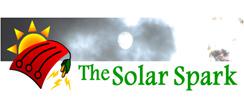Year 5: Changes of state
Properties and Changes of Materials has been split into two lists , which look at properties and changes of materials and changes of state.This list consists of lesson plans and activities to support the teaching of changes of state in Year Five. It contains tips on using the resources, suggestions for further use and background subject knowledge. Possible misconceptions are highlighted so that teachers may plan lessons to facilitate correct conceptual understanding. Designed to support the new curriculum programme of study it aims to cover many of the requirements for knowledge and understanding and working scientifically. The statutory requirements are that children are taught to:
- demonstrate that dissolving, mixing and changes of state are reversible changes
- explain that some changes result in the formation of new materials, and that this kind of change is not usually reversible, including changes associated with burning and the action of acid on bicarbonate of soda.
Visit the primary science webpage to access all lists.
Understanding Reversible Change
This short clip helps children see that chocolate changes from a solid to a liquid when heated and back to a solid when cooled. Children will love seeing how chocolates are made and how the science of changing state has applications in the real world. Making crispy cakes or even chocolates if you are more adventurous is a great activity, which children will enjoy whilst helping them learn more about changing state.
Properties and Changes of Materials *suitable for home teaching*
This resource contains activity ideas and worksheets which support the teaching of materials and their properties. They cover many aspects of the topic including: comparing the properties of different materials, separating mixtures of materials based on their properties, irreversible and reversible changes and melting and freezing of different materials. It also includes an assessment sheet on the topic.
Selenia in Homeward Bound
Read about the adventures of Selenia in this colourful comic which introduces changes of state. Children test different materials to see which would make the best insulator to slow down the melting of ice. The water could be collected and refrozen to show that this is a reversible change.
Is There Anyone Out There?
Why not use Space as an engaging context in which to explore irreversible reactions?
This activity is great fun and provides children with an opportunity to use equipment carefully whilst exploring volcanic eruptions (page 34 on the pdf). The eruptions are mimicked using a mixture of bicarbonate of soda and vinegar which reacts to produce carbon dioxide gas. This activity could be carried out as a fair test by changing the amount of either the bicarbonate of soda or vinegar and measuring how far the lava flows.
Plastic from Milk
Creating plastic from milk sounds impossible and as the two materials are so different it is a good way of showing that an irreversible reaction has occured resulting in the formation of a new material.
Add vinegar to milk and watch the milk separate into a solid and a liquid known as curds and whey. Remove the water by filtering then drying in an oven to leave casein as a brittle plastic.
Clean Science
A range of fun activities linked to reactions.






